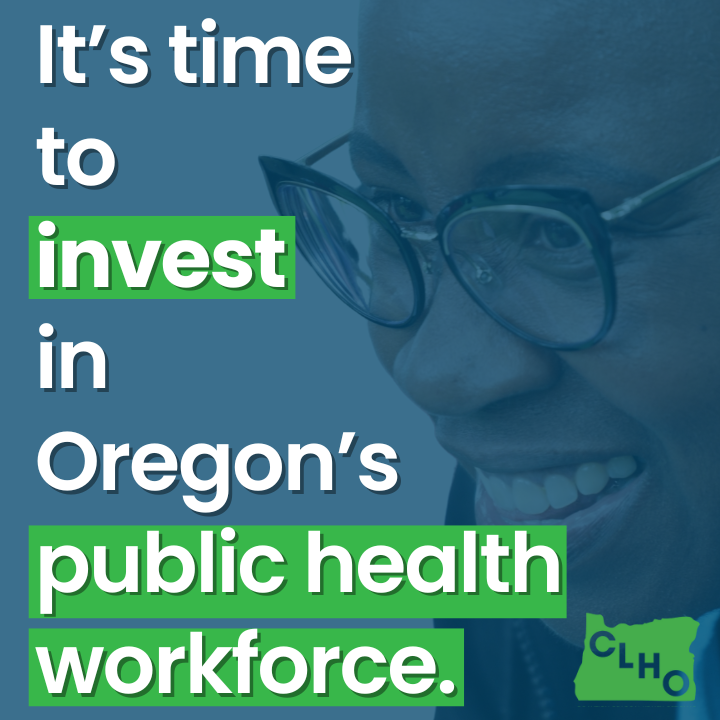
Low-income Oregonians seeking behavioral health treatment are given lists of providers who have no appointments or may not still be practicing in Oregon. Stressed-out mental health professionals can earn more raking leaves. The state psychiatric hospital is closed to all but the most acute-needs patients.
Those conditions mean that the poorest and most vulnerable Oregonians are often denied behavioral health services until their conditions escalate to a crisis level, a panel of experts discussed during an online forum on Wednesday.
As Oregon continues to rank poorly in national studies on access to behavioral health and policymakers look for solutions, a panel of experts discussed during an online forum Wednesday the particular challenges people face on the Medicaid-funded Oregon Health Plan.
“All of this puts more people on the streets, more people in jails, more people in our emergency rooms, and it incredibly stresses an already stressed crisis system,” Kimberly Lindsay, executive director of Community Counseling Solutions, said during the event was organized by the Oregon Health Forum, a sister organization of The Lund Report.
The forum highlighted how the state’s bureaucratic and fragmented system is a barrier to mental health and substance use treatment for the 1.4 million Oregonians covered by the Medicaid-funded Oregon Health Plan.
Portland journalist Emily Harris, who moderated the forum, cited Mental Health America rankings that characterized Oregon as among the worst states in the country considering the gap between its prevalence of behavioral health issues and limited access to care.
Oregon lawmakers have spent over a billion dollars in recent years hoping to prop up the state’s underdeveloped behavioral system. Last month, Gov. Tina Kotek’s behavioral health initiatives director shared a presentation with a legislative panel noting that while thousands of Oregonians experience serious mental illness or substance use disorders, “there is no unified strategy to align and coordinate existing efforts, which are disparate and siloed.”
That lack of coordination was a repeated topic during the panel, which included the perspectives of a top state official, a Medicaid insurer, a service provider and advocates. While the panel laid out the scope of the problem, they offered few easy fixes.
“It’s going to take years to get to a place where we are going to be satisfied,” Ebony Clarke, behavioral health director for the Oregon Health Authority, said during the panel, adding that it was “frustrating.”
“I’ve been in this work for 25 years, and this is not a new conversation,” she said. “And we’re at a pivotal, pivotal moment in our society where we have to bring forward new, bold and courageous solutions and strategies.”
Not enough providers
During the forum, Ellen Pinney, principal ombudsperson for Oregon Health Authority, told a story she said was indicative of a key problem. Pinney serves as an independent advocate for Oregon Health Plan members, hearing their complaints and using them to press for changes at the authority.
Coordinated care organizations, 16 regional insurers, are responsible for administering benefits to Oregon Health Plan members. Pinney said a woman covered by the plan complained to her office that her coordinated care organization would no longer pay for her therapist.
The woman, said Pinney, was “severely traumatized” and her coordinated care organization provided her with a 90-page list with 772 providers. But Pinney said that of those providers, one was deceased, multiple were not practicing in Oregon, and others were out of state or for children.
“At the end of the day, out of that 772 list of providers, there were eight that met this client’s need,” Pinney said. “None of them were close to her. Some were not open to new patients, and some had appointments that were so far out to be basically inaccessible for this client.”
Pinney said the therapist was keeping the woman from a mental health crisis and it took a judge stepping in to order the coordinated care organization to pay for the services.
She said the story demonstrates the problem of “ghost networks” that she said clients can’t navigate if they are in a mental health crisis.
“We need a statewide network of providers willing and able to serve OHP clients,” she said. “We need to get away from forcing each provider to be credentialed with each individual CCO, we need to give our act that would maximize access within the current system.”
There are only 47 residential substance use disorder facilities in the state and the average coordinated care organization contracts with nine, according to an ombuds report referenced by Pinney.
“That means if I’m in the wrong CCO, I may not have access to a substance use disorder residential program that is open,” she said.
She said a man complained to the ombuds program that he was told by a residential facility that if he dropped his Oregon Health Plan they would treat him for $26,000.
Jill Archer, senior vice president of behavioral health for coordinated care organization CareOregon, responded that the issue is complicated. She said that coordinated care organizations try to limit the number of practitioners in their network so they can better ensure quality of care.
She added that coordinated care organizations were set up to be responsive to local needs and prefer to work with local providers.
Chris Bouneff, executive director of the National Alliance on Mental Illness Oregon, added that “there is no insurance product out there that has an adequate network of providers.
“So this is not unique to Medicaid,” he said. “This is part of healthcare. So we’re behind an eight ball and have been behind an eight ball.”
Not enough workers
Archer said “great mismatch of acuity” in the behavioral health system. Because of limits to access to the state hospital, people with higher needs are being pushed through the rest of the system that’s leading to burnout of workers.
She said that there is a “lack of capacity” for people with high needs, and her organization was looking for ways to expand the state’s behavioral health workforce.
But Pinney referenced an earlier report from her office that suggested coordinated care organizations were underspending on behavioral health. The report found that the average net premiums spent by all coordinated care organizations was 13.7% for the first part of 2022.
She said that a related issue is inadequate wages for behavioral health workers. She recalled hearing from someone who worked for CAHOOTS, Eugene’s mobile crisis response unit, that they could take a less stressful job raking leaves.
Lindsay said she’s also seen clinical mental health workers at her organization, which serves five counties in eastern Oregon, leave their positions because they spent 25% to 35% of their time doing paperwork.
“When you're spending that much time dotting your “i’s” and crossing your “t’s” it’s not working for people,” she said. “And they’re leaving and they're going into private practice.”
Clarke responded that the health authority was looking into ways to reduce the administrative burden for providers. She said the health authority no longer requires providers to treat someone who needs immediate care because of an addiction without having to first do an intake assessment.
Bouneff added that while Medicaid has been expanded, it still does not fully cover the cost of care particularly for those with high needs.
Fragmented system
Lindsay said that providers use different ways of collecting data, and “It just feels like we are starting off at square one when someone walks into our building.” The system’s complexities mean providers spend a large portion of their time on administrative tasks rather than providing needed care.
Community Counseling Solutions operates the David Romprey Oregon Warmline, a support line for people with mental health issues that may not have reached the crisis level. While the line won an award for saving the state money by providing help that avoids costlier care, it’s struggled to secure stable funding from the health authority and the Oregon Health Plan. Lindsay said she was still waiting for a final contract.
Pinney pointed out that the health authority has separate divisions for behavioral health and Medicaid. Clarke said that her division serves as the “connective tissue” between the two.
Solutions and accountability
In addition to Pinney’s call for a statewide treatment network, Harris brought up how in Connecticut a nonprofit organization does administrative work for providers so they can focus on care.
Harris also asked Clarke about how the health authority could ensure coordinated care organizations are providing sufficient behavioral health coverage.
“I think accountability is critical,” Clarke responded. She also said the health authority would be “more intentional and consistent” with regard to behavioral health in its upcoming contracting with coordinated care organizations.
But Clarke also added that “accountability is not just the role of OHA” and it “takes a village.”
Harris asked Clarke about the idea of including incentive payments in the upcoming contracts with coordinated care organizations for getting behavioral health care to members quickly.
Clarke responded that she has limited authority over what can go into the contracts, but added that “behavioral health has to be a priority.”
“We need something that is a little bit more audacious and bold to get us to where we need to be,” she said.



I would like to add that CCOs are often very slow in empaneling our credentialed therapists. As a result, many certificate of approval (COA) agencies have their staff start seeing clients as soon as a DMAP number is issued. However, if the CCO delays empaneling that therapist, the services provided between the issuance of the DMAP number and the completion of empaneling by the CCO are not paid for by the CCO. This adds a financial burden to COA agencies, strains onboarding, and has the potential to seriously delay access for clients seeking treatment.
Kelli McKnight, CEO
Options Counseling and Family Services